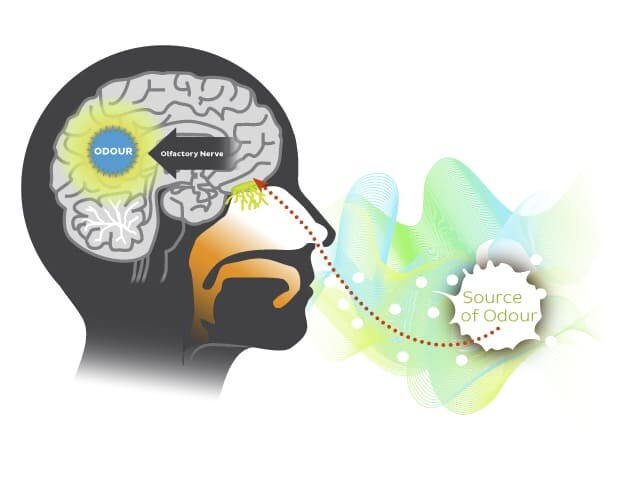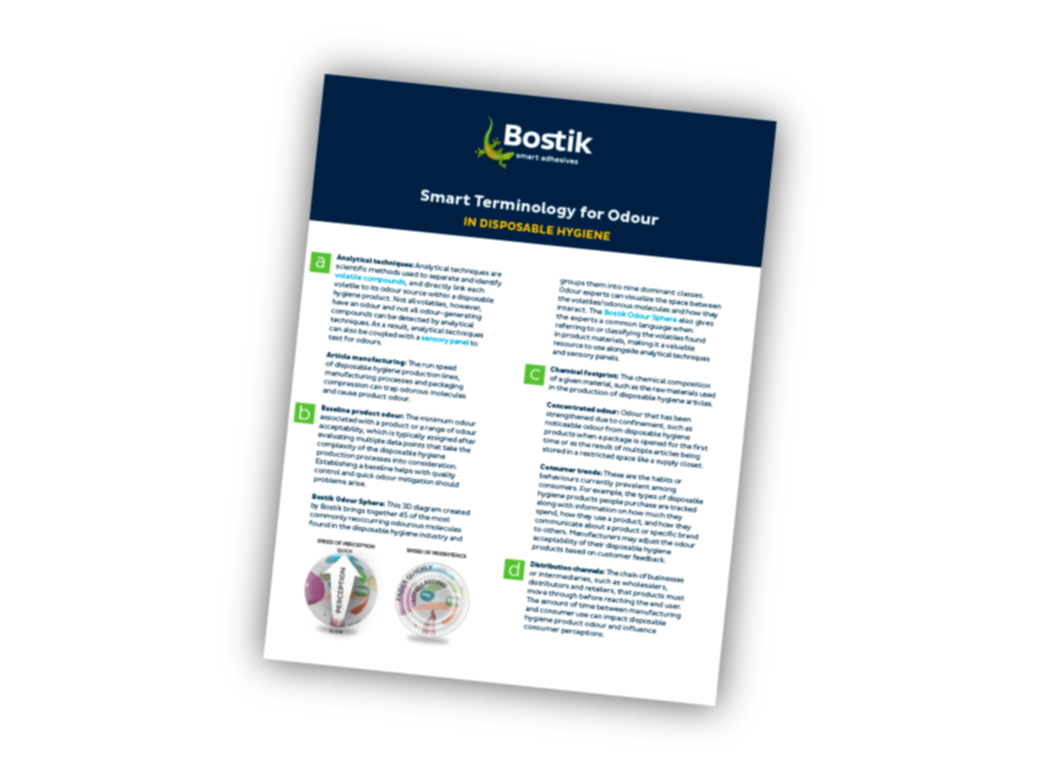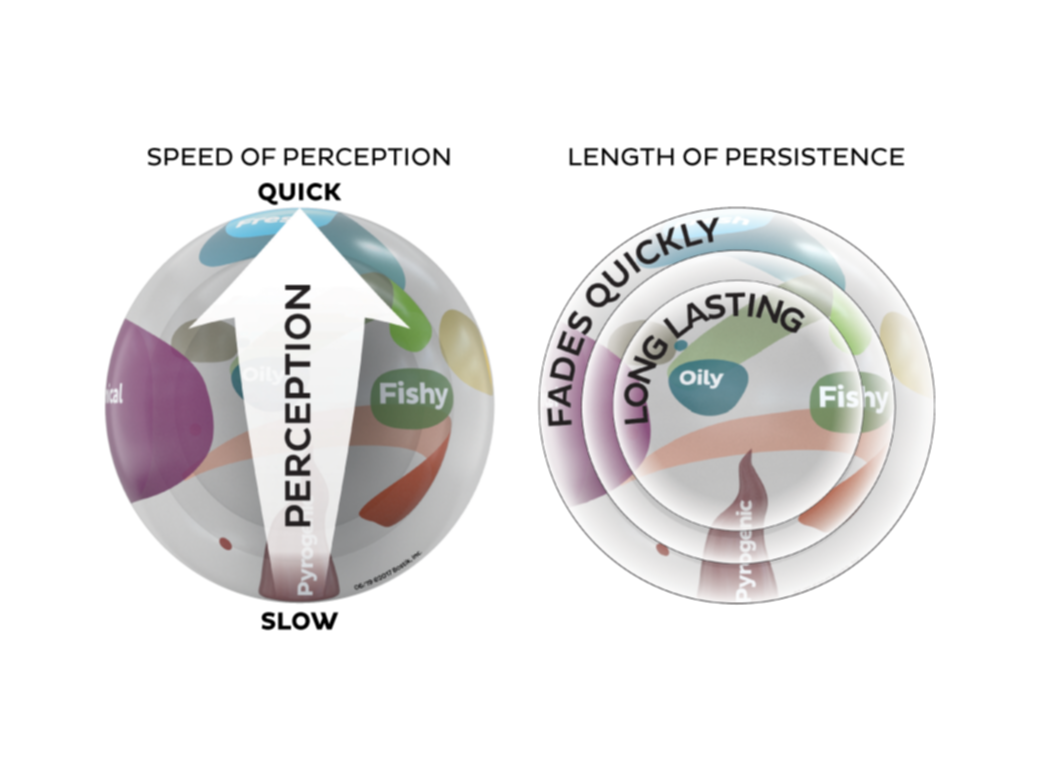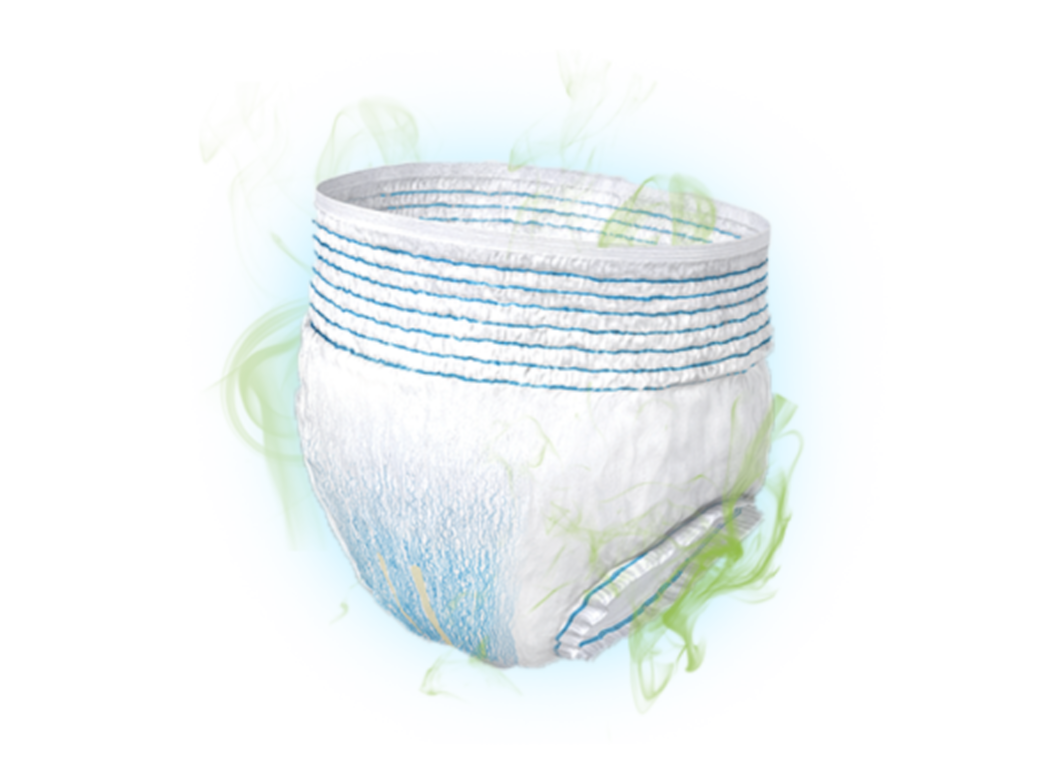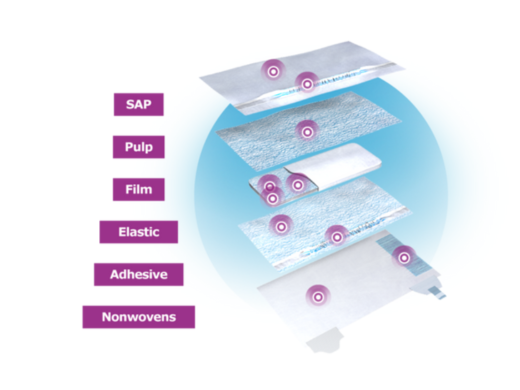Pinpointing an Odour Source Through Testing
The odour of a disposable hygiene product plays a significant role in consumer satisfaction. While knowing how humans perceive odour can help manufacturers take the first step toward addressing it, there is no standard, industry-recognized method for odour testing. The odour experts at Bostik believe the best approach for identifying and eliminating product odour is to leverage the two test methodologies together:
1. Analytical Techniques
The chemical footprint of an odour is typically determined by analyzed methods, such as gas chromatography linked to a receptor or detector. These techniques allow separation and identification of molecules and can also be coupled with sensory panels to directly link a molecule to its odour. Analytical techniques have some limitations. Not all molecules detected have an odour. Similarly, not all odour-generating compounds can be detected by analytical techniques.
2. Sensory Panels
Odour experts also can measure product odour through sensory panels. A sensory panel is comprised of a group of trained individuals who evaluate odour in a standardized way to provide information on intensity, description, and like or dislike. A control is necessary as a calibrating element.
When measuring odours via human sensory panels, odour experts traditionally break down the perception of odour along three axes:
1. Nature or characteristics of the odour, which is an objective description
2. Hedonic tone, which is a subjective measure of the pleasantness or unpleasantness of an odour
3. Perceived intensity of an odour
Sensory panels are not without their own challenges. Some major challenges include:
- Repeatability
- Reproducibility
- Cultural/personal bias and sensitivity
- Vocabulary
- The lack of test method standardization in the industry
To overcome these challenges, a sensory panel must be extensively trained to ensure that panel results are not based on personal preference.
The combination approach
To be able to reduce or eliminate an odour, we have to capture exactly where product odour comes from, when it’s evident, to whom it’s evident and what causes it. The combination of a sensory panel and analytical techniques gives researchers the best chance to determine exactly what molecule (or combination of molecules) is at the origin of product odour.
Overcoming the challenges of characterizing odour
Bostik has developed our own unique 3D representation, known as the odour sphere, which brings together 54 of the most commonly reoccurring molecules found in the disposable hygiene industry and groups them into 9 dominant classes.
Because people perceive odours differently based on genetics, personal preferences, and regional or cultural influences, the Bostik odour sphere is effective in giving our specially trained experts a common language when referring to the molecules found in materials or products. It also allows them to visualize the space between the molecules and how they interact. Additionally, our odour sphere is a helpful educational tool that we use with our customers to improve odour-related concerns by detecting odours and identifying their source.
Due to the complexities of testing for product odour, it’s best to leverage the expertise of our odour experts to pinpoint the source and work together to investigate possible solutions. Keep reading to learn more about our odour testing and training services.
Odour Materials from Bostik Academy
Click the links below to sign-in and access all of our Academy materials.
